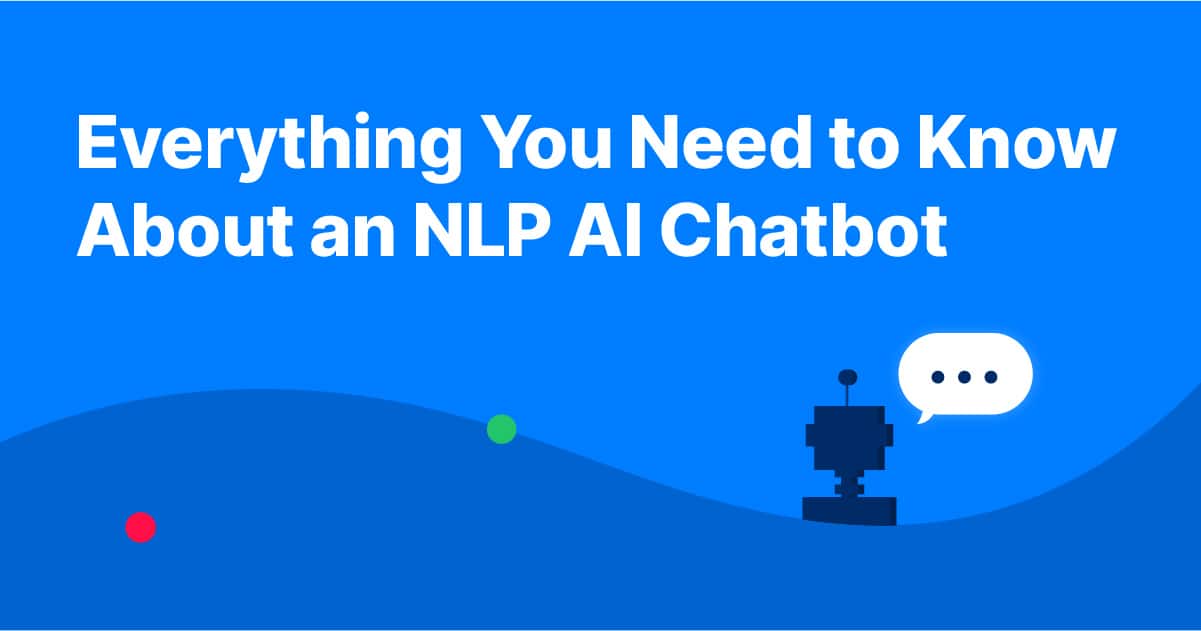In 2023, the era of AI finally surfaced. Everywhere you look, someone is sharing something about ChatGPT. The reality is that AI has been around for a long time, but companies like OpenAI and Google have brought a lot of this technology to the public. Of this technology, NLP chatbots are one of the most exciting AI applications companies have been using (for years) to increase customer engagement.
NLP stands for Natural Language Processing, a form of artificial intelligence that deals with understanding natural language and how humans interact with computers. In the case of ChatGPT, NLP is used to create natural, engaging, and effective conversations. NLP enables ChatGPTs to understand user input, respond accordingly, and analyze data from their conversations to gain further insights. NLP allows ChatGPTs to take human-like actions, such as responding appropriately based on past interactions.

Automate Your Work
Capacity’s enterprise AI chatbot can help:
- Answer FAQs anytime, anywhere
- Find relevant documents within seconds
- Give surveys and collect feedback
Why adopt an AI chatbot powered by NLP?
NLP chatbots are invaluable for any business, significantly larger businesses with more complex customer service needs. NLP chatbots can quickly and accurately handle many customer requests, freeing up your team’s time to focus on more critical tasks.
NLP chatbots also enable you to provide a 24/7 support experience for customers at any time of day without having to staff someone around the clock. Furthermore, NLP-powered AI chatbots can help you understand your customers better by providing insights into their behavior and preferences that would otherwise be difficult to identify manually.
5 steps to adopt an NLP AI-powered chatbot for your business

1. Determine your business goals
NLP AI-powered chatbots can help achieve various goals, such as providing customer service, collecting feedback, and boosting sales. Determining which goal you want the NLP AI-powered chatbot to focus on before beginning the adoption process is essential.
2. Choose an NLP AI-powered chatbot platform
Many platforms are available for NLP AI-powered chatbots, including ChatGPT, IBM Watson Assistant, and Capacity. The thing to remember is that each of these NLP AI-driven chatbots fits different use cases. ChatGPT is not a one size fits all solution. Consider which NLP AI-powered chatbot platform will best meet the needs of your business, and make sure it has a knowledge base that you can manipulate for the needs of your business.
3. Train your AI-driven chatbot
Now that you have your preferred platform, it’s time to train your NLP AI-driven chatbot. This includes offering the bot key phrases or a knowledge base from which it can draw relevant information and generate suitable responses. Moreover, the system can learn natural language processing (NLP) and handle customer inquiries interactively.

Automate Your Work
Capacity’s enterprise AI chatbot can help:
- Answer FAQs anytime, anywhere
- Find relevant documents within seconds
- Give surveys and collect feedback
4. Test and deploy your chatbot:
After you have provided your NLP AI-driven chatbot with the necessary training, it’s time to execute tests and unleash it into the world. Before public deployment, conduct several trials to guarantee that your chatbot functions appropriately. Additionally, offer comments during testing to ensure your artificial intelligence-powered bot is fulfilling its objectives.
5. Monitor your AI chatbot’s performance:
After deploying the NLP AI-powered chatbot, it’s vital to monitor its performance over time. Monitoring will help identify areas where improvements need to be made so that customers continue to have a positive experience.
The bottom line: NLP AI-powered chatbots are the future
Organizations must now adjust to the new customer support paradigm – from phone conversations to online services. Thankfully, AI-powered chatbots are here to provide much-needed help and should be a must in any business toolbox. They have countless advantages: 24/7 customer service, customer needs knowledge, time, and resource preservation! Companies like Capacity can automate over 90% of tasks using new chatbot technology. NLP AI chatbots will give you an edge over your competitors; if you haven’t already done so, it’s high time you embrace this technology.
Explore how Capacity can support your organizations with an NLP AI chatbot.





